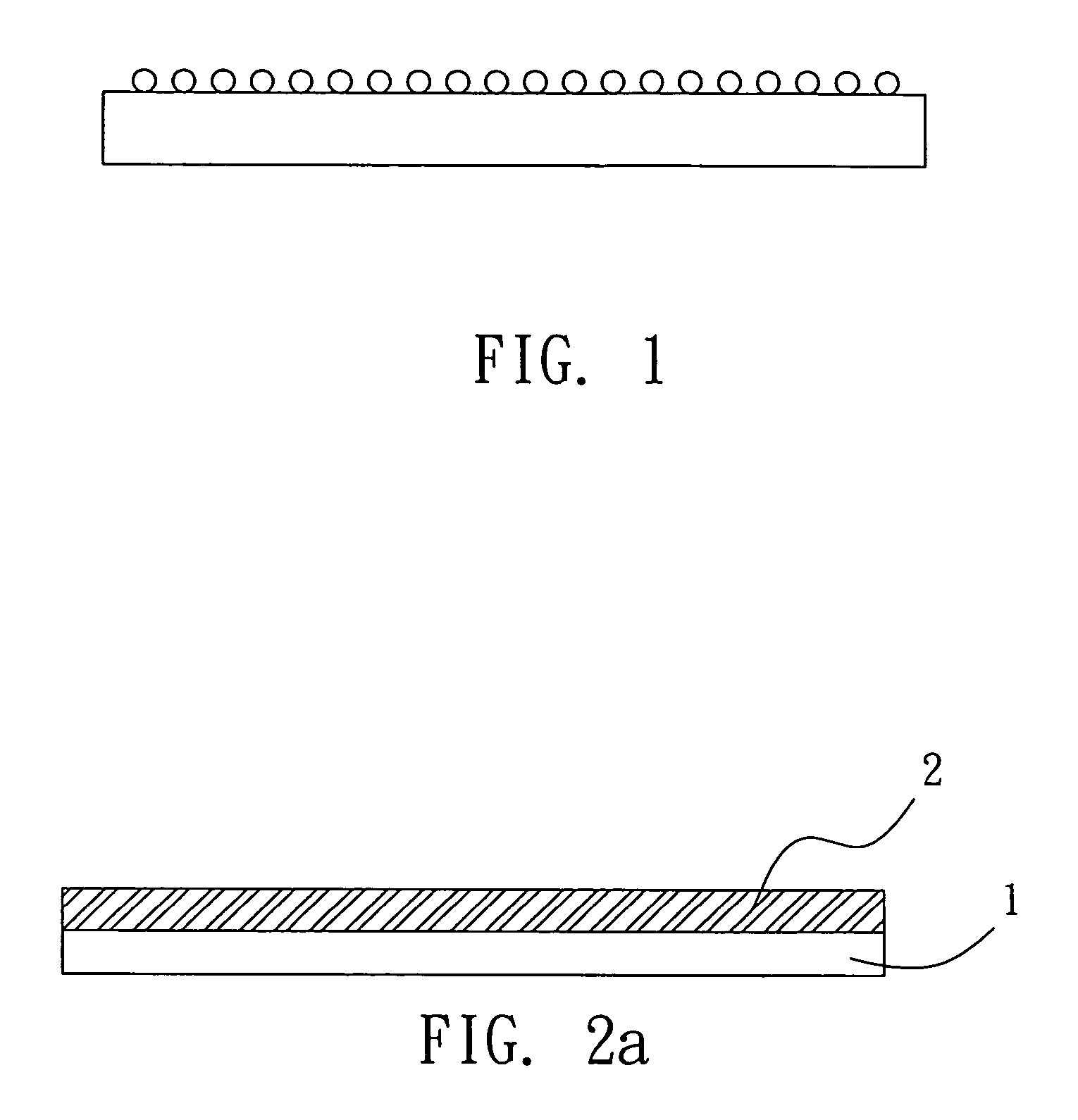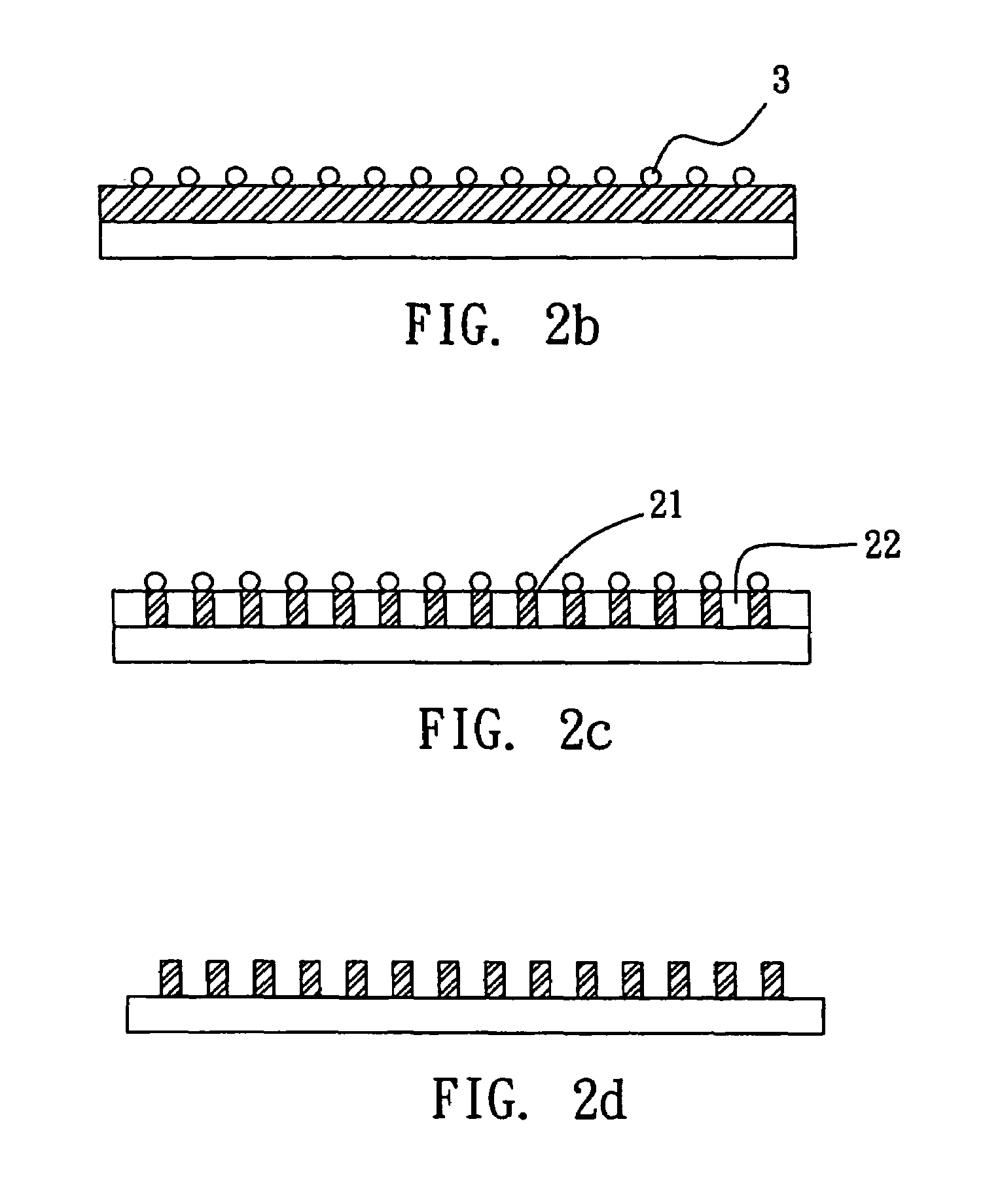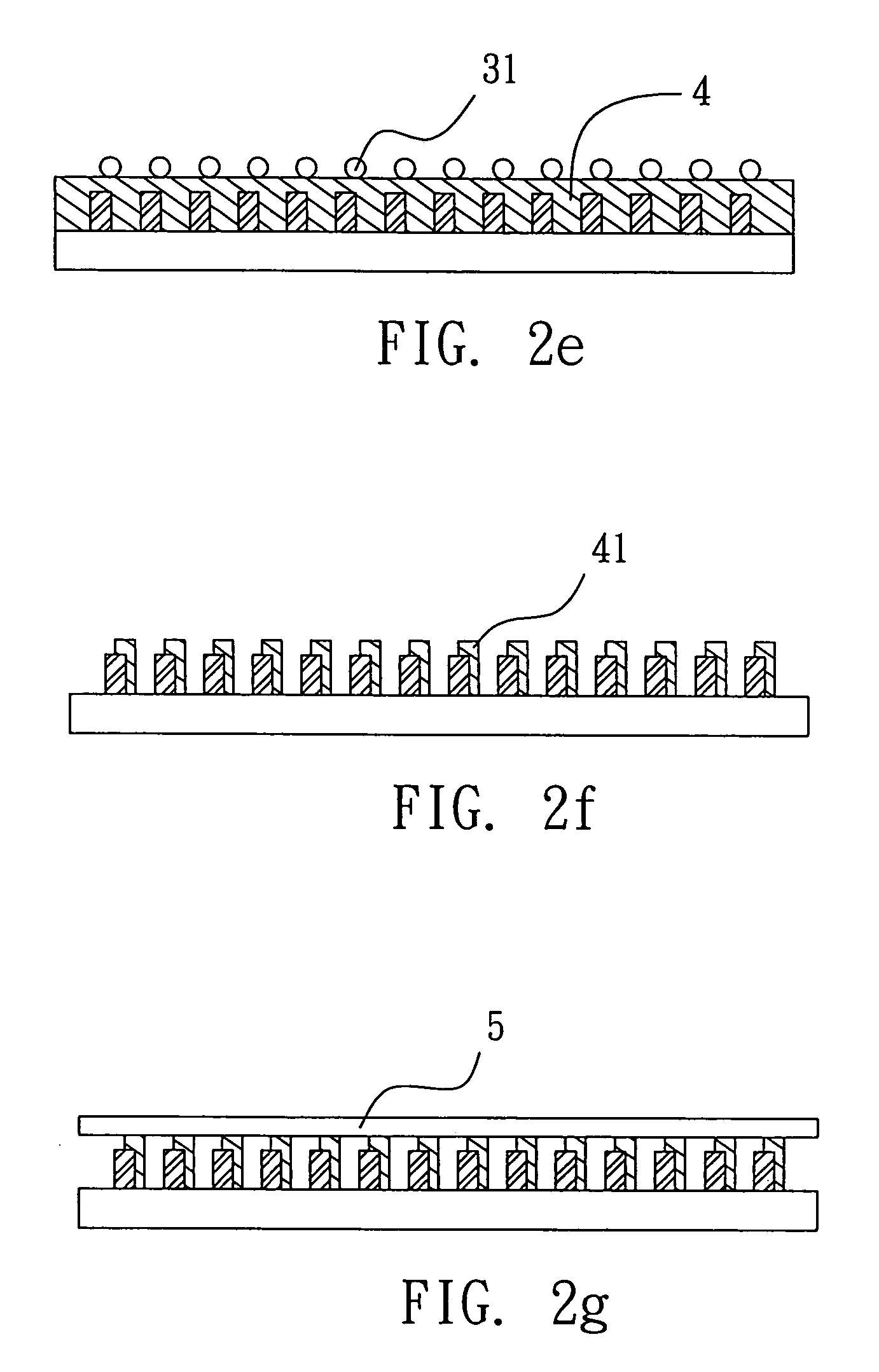Method for manufacturing a diffuser for a backlight module
a backlight module and manufacturing method technology, applied in the direction of photomechanical equipment, instruments, originals for photomechanical treatment, etc., can solve the problems of complex sieving of the particle size of the scattering particles, the non-uniform surface of the sandblast method, and the inability to uniformly disperse the scattering particles in the adhesive, etc., to achieve excellent diffusing efficiency, avoid the complex step of dispersing particles, and simplify the manufacturing of the diffuser
- Summary
- Abstract
- Description
- Claims
- Application Information
AI Technical Summary
Benefits of technology
Problems solved by technology
Method used
Image
Examples
Embodiment Construction
[0015]The material of the transparent substrate is not restricted in the method for manufacturing a diffuser for a backlight module of the present invention. Preferably, the transparent substrate is made of acrylates, polyethylene terephthalate (PET), or polycarbonate (PC). The kind of the photoresist is not restricted. Preferably, the photoresist has at least one photo-sensitive polymer and one photo initiator. More preferably, the photoresist is a polyacrylate-based photoresist. The material of the masking particles in the present invention is not restricted, and preferably is selected from the group consisting of glass, TiO2, silica, and polystyrene. The particle sizes of the masking particles are not restricted, and may be adjusted according to the light source. Preferably, the particle sizes range from 100 nm to 50 μm. The material of the passivation layer in the method of the present invention is not restricted. Preferably, the passivation layer is made of polyacrylates, polyc...
PUM
| Property | Measurement | Unit |
|---|---|---|
| particle size | aaaaa | aaaaa |
| particle sizes | aaaaa | aaaaa |
| particle size | aaaaa | aaaaa |
Abstract
Description
Claims
Application Information
 Login to View More
Login to View More - R&D
- Intellectual Property
- Life Sciences
- Materials
- Tech Scout
- Unparalleled Data Quality
- Higher Quality Content
- 60% Fewer Hallucinations
Browse by: Latest US Patents, China's latest patents, Technical Efficacy Thesaurus, Application Domain, Technology Topic, Popular Technical Reports.
© 2025 PatSnap. All rights reserved.Legal|Privacy policy|Modern Slavery Act Transparency Statement|Sitemap|About US| Contact US: help@patsnap.com



